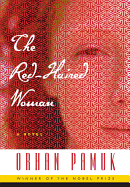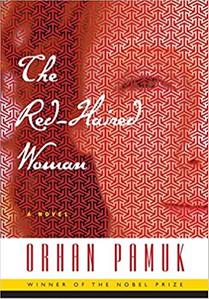
 This excellent English translation of Orhan Pamuk's novel The Red-Haired Woman casts a powerful spell of fate and sorrow.
This excellent English translation of Orhan Pamuk's novel The Red-Haired Woman casts a powerful spell of fate and sorrow.
Pamuk (My Name Is Red) won the Nobel Prize for Literature in 2006. He's a heavy hitter in international letters and is fascinated by the myriad ways myth and real life interact. The Red-Haired Woman takes place in his native Turkey, outside Istanbul. At first, the story is narrated by a young boy named Cem, whose father, a leftist dissident, is taken to prison. Desperate for money, Cem finds a job as an apprentice for a renowned well digger, Master Mahmut, in the small town of Öngören. The two work together on a barren plateau to find water for a client. Relying on the master's experience and instinct, they begin a well that becomes an ordeal. They hit rock, they go over schedule, yet Mahmut urges his apprentice to keep the faith. The two become like father and son, and at night they visit the town for supplies and leisure. That's where Cem meets the alluring "red-haired woman," who is part of a traveling theater troupe. As he falls in love, his obedience to his master and the well wavers, precipitating a tragic accident that follows him into adulthood and ultimately shapes his destiny.
Pamuk writes with the lean, archaic simplicity of parable, gradually adding moral weight to his tale with each successive chapter. Cem and Mahmut's search for water takes on mythical qualities. "According to Master Mahmut, the deeper we dug, the closer we got to the sphere of God and His angels," Cem says, noting the irony of looking for heaven in the ground instead of in the sky. Pamuk uses geology, the earth's layers and veins, to produce a number of memorable images and metaphors, suggesting human fate lies in the nature of the soil. As a counterpoint to this, he characterizes the red-haired woman as a galvanizing, liberating force. Cem's first experience with love is nothing short of rapturous, "astral," as he describes it. This interplay between "the language of the stars" and "the language of the soil" creates interesting tension.
Nowhere is this tension more prominent than in the power struggle between father and son, in this case Mahmut and Cem. Throughout his novel Pamuk draws attention to Oedipus the King and Shahnameh, two classics about patricide and filicide, respectively. These stories parallel his, which breaks open in a tug-of-war between obedience and a traditional sense of duty and the individualism of secular modernity. In the red-haired woman's narrative section, she comments on this ancient battle: "Whether it was fathers killing their sons, or sons killing the fathers, men always emerged victorious, and all that was left for me to do was weep... the logic of the universe turns on the tears of mothers."
The Red-Haired Woman is a novel of uncommon moral power. It blends myth and life, fatalism and freedom, into a harrowing literary experience. It's the work of a master writer. --Scott Neuffer, writer, poet, editor of trampset
Shelf Talker: In this novel from Turkish author and Nobel laureate Orhan Pamuk, a young apprentice must contend with the forces of love and fate.

